17+ SAMPLE Behavior Warning Letter
-

Behavior Warning Letter Template
download now -

Warning Letter For Rude Behavior Template
download now -
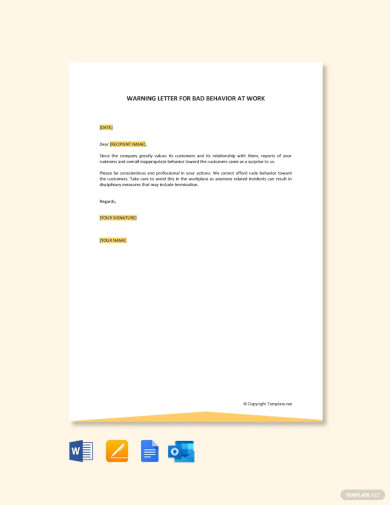
Warning Letter for Bad Behavior At Work Template
download now -

Free Warning Letter for Bad Behavior Template
download now -
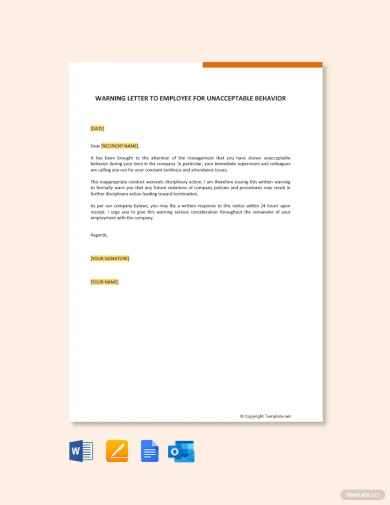
Warning Letter To Employee For Unacceptable Behavior Template
download now -

Simple Behavior Misconduct Warning Letter
download now -
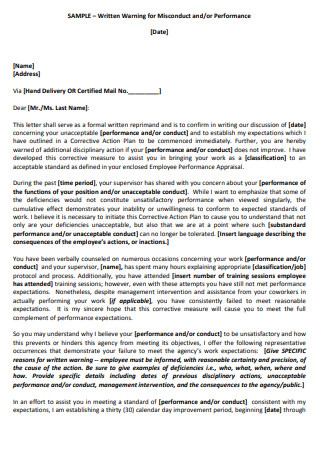
Sample Work Behavior Warning Letter
download now -

Student Classroom Behavior Warning Letter
download now -
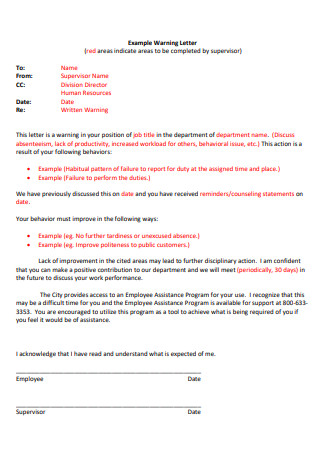
Unprofessional Behavior Warning Letter Example
download now -
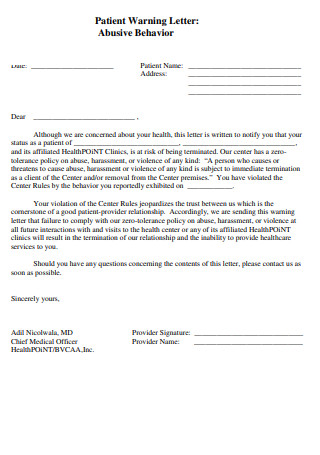
Abusive Complaint Behavior Patient Warning Letter
download now -
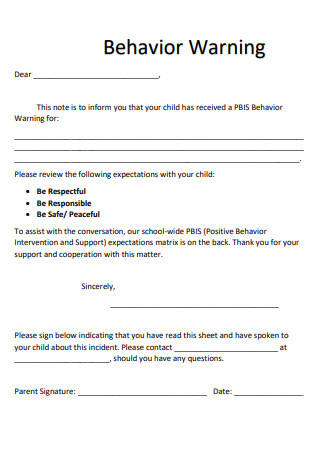
Child Disrespect Behavior Warning Letter
download now -

Employee Behavior Warning Letter
download now -
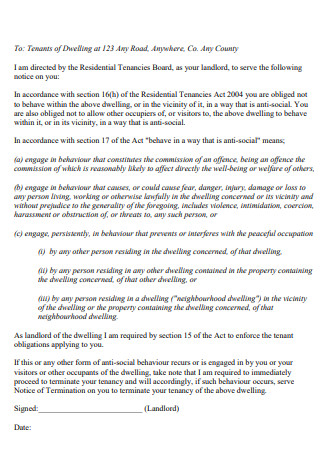
Warning Notice Letter for Parent Bad Behaviour
download now -
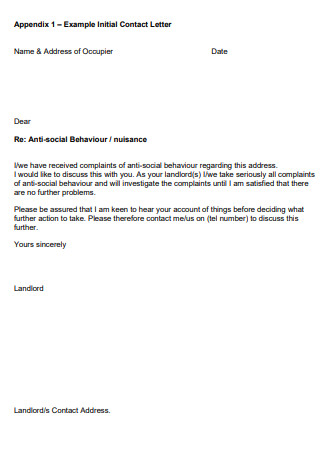
Anti-Social Termination Behaviour Warning Letter
download now -
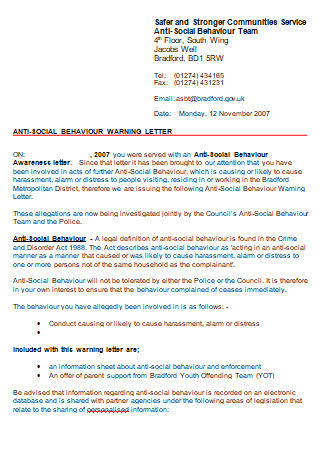
Social Staff Behavior Warning Letter
download now -
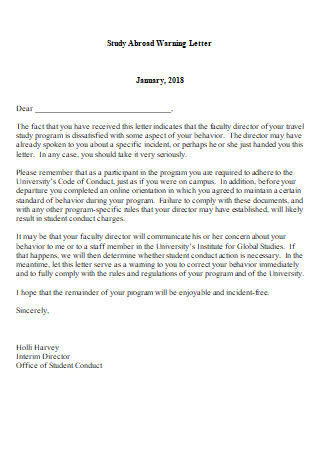
Suspension Behavior Warning Letter
download now -
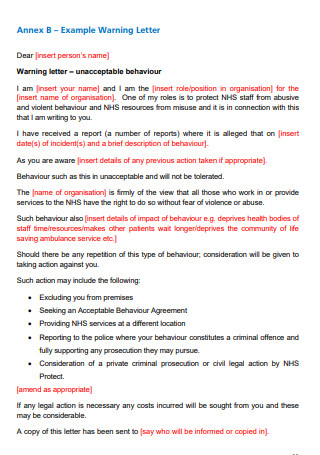
Driver Behavior Warning Letter
download now -
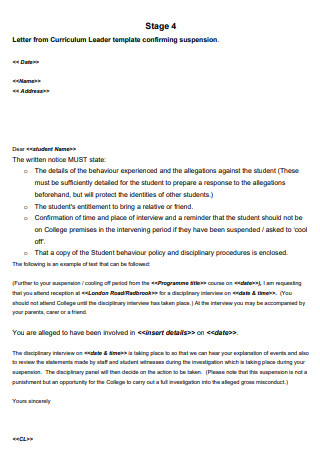
Student Attitude Problem Behavior Warning Letter
download now
FREE Behavior Warning Letter s to Download
17+ SAMPLE Behavior Warning Letter
What Is a Behavior Warning Letter?
What Constitutes a Behavior Warning Letter?
How to Create a Behavior Warning Letter?
FAQs
Is it a serious matter when you receive a behavior warning letter?
How do you respond when you’re an employee and you receive a behavior warning letter?
What types of offenses usually merit a behavior warning letter?
What comes next after receiving a behavior warning letter?
What are the other names of a behavioral warning letter?
What Is a Behavior Warning Letter?
A behavior warning letter is a type of letter issued to the employee by the employer or the management notifying the employee that they had violated a company policy. It is often called as a written warning, a letter of reprimand, a disciplinary form, and/or an employee warning notice. The behavior warning letter is a form of documentation to inform the employee that their action is unacceptable, and also states the consequences connected with the violation. The word violation is also called an offense.
The behavior warning letter is typically part of a company’s disciplinary action plan or process. Usually, when an employee commits an offense or a violation, the company issues first a verbal warning. A written warning follows next if the same offense is committed by the same employee. Then a final written warning follows if the employee repeated the same offense, and often followed by termination, if necessary. Before any of these takes place, employees are typically informed upfront or were made aware during the hiring process what are the company’s policies, and all of these policies are usually found in the company’s or employee’s handbook.
A warning letter is usually seen as a negative thing. It’s not something any employee looks forward to receiving. That may be the case, but the warning letter should be treated as significant since it is, after all, an important documentation that could protect both the rights of the employer and the employee as well. The letter signifies that a due, diligent investigative process has taken place to make sure that both the employee and the employer are protected and are treated fairly. It puts into context the fairness in the disciplinary process.
What Constitutes a Behavior Warning Letter?
The behavior warning letter comprises several different parts, making a timeline chart of the offense committed. The overall purpose of the behavior warning letter is to explain what has been violated and what are the corresponding consequences. Here are the following items that are usually found in the warning letter:
How to Create a Behavior Warning Letter?
The next thing an employer needs to do after exhausting the verbal warning process, and yet again the employee repeated the offense, is to make a behavior warning letter. How do you write one up? Rule of thumb is to make a letter that is concise and straightforward. Don’t use long sentences. Go straight to the point. The explanation should be clear on what was the employee’s wrongful conduct or behavior, and what are the corresponding disciplinary actions.
We have lots of different misconduct warning letter templates on how to write a warning letter available on our website. It is easily customizable and very much easy to follow through. If you want to know more what are the steps how to make a behavior warning letter, read on:
Step 1: Make a Timeline of the Warning
Create a timeline of the offense committed. First, write down the date of the behavior warning letter. Then indicate when the verbal warning was given. This timeline adds credibility to your behavior warning letter.
Step 2: List the Names of the Parties Involved
Mention the names of parties involved in the disciplinary process. You have the name of the employee who this letter is addressed to, the name of the aggrieved employee, the company, or the name of a customer affected by the employee’s action.
Step 3: Provide the Details of the Incident
Transparency is important in any process. In this section, write down in detail the incident that took place and the reason why this incident was considered a violation. Quote the company policy that was violated. Quoting the violated company policy adds credibility to your letter. It also helps to avoid making baseless claims. Be brief and clear and direct to the point. Maintain a professional tone all throughout in giving out the details.
Step 4: Indicate the Company’s Corresponding Corrective Measure
The employee whose behavior warning letter is addressed should be made aware of the consequences and actions that will be taken as a punishment for the unacceptable conduct or behavior. List down the appropriate measure the company will be taking related to the employee’s violation. Describe the impact of the violation to the company or the other employees.
Write down the date when was the verbal warning given in relation to the violation so that it can be justified why the employee will be receiving warning letter. It should also include a sample brief statement what further disciplinary actions will be taken if the same violation is repeated. In the same note, allow the employee to respond to the letter by giving a time period for the response. It could either be agreed upon as a form of a letter or a meeting with the employer or with the manager. You could also offer solutions, how the employee can improve their situation or make amendments.
Step 5: Include the Signatories
Always include a space for signatories. After you have delivered the warning letter, you need to get a confirmation or an acknowledgment that the employee has received the letter. Allot a space below the letter where the employee can sign. If you send the letter through email, always ask for a confirmation that the employee has seen and received the email.
FAQs
Is it a serious matter when you receive a behavior warning letter?
All kinds of warnings should be taken seriously and should not be easily dismissed. Think of it as a step towards the termination process. But, of course, termination is preventable as long as the employee shows signs of improvement and tries not to do the same act of violation again.
How do you respond when you’re an employee and you receive a behavior warning letter?
Remain calm. Remember that all kinds of process, even that of a disciplinary action, would always go through due process that includes an investigation and a chance for you to respond. You can always ask for some legal advice from a lawyer on how to go about answering the behavior warning letter. Or if you’re asked to respond verbally in a committee hearing or a meeting with the managers, you can ask for a lawyer to accompany you to such a meeting to make sure that someone will guide you on how to respond.
What types of offenses usually merit a behavior warning letter?
These offenses include: acts of violence or threats against another employee or the company itself; assault or sexual harassment within the workplace; intentional misconduct; dress code violation; insubordination; excessive absences or tardiness; poor quality performance; fraud, misappropriation of funds, and/or theft; and discrimination against gender or race.
What comes next after receiving a behavior warning letter?
The employee is given a certain time period to respond to the behavior warning letter, or is given a chance to make some amendments. If the same offense is committed again, the offense will then be considered as a serious offense, and the employee can be suspended while further investigation is being made.
What are the other names of a behavioral warning letter?
The behavioral warning letter is also called a written warning, reprimand letter, disciplinary form, and/or an employee warning notice.
A behavior warning letter should serve as a wake-up call to the employee. It should be written in a way as a reprimand that explains why the employee’s actions are wrong or unacceptable despite previous verbal warnings. Reprimanding an employee is never easy, and one of the dilemmas being faced by an employer is how to write a warning letter. Also, there’s that cloud of worry hovering above, just thinking about how the employee will react to the warning letter.
The solution to this case? Firm up. Create that perfectly outlined behavior warning letter that leaves out no details in the disciplinary process. How to write up your employee should not be difficult with the help of our templates ready for download. You can use any of our existing warning letters as a guide to create your behavior warning letter. Head over to our website, and see how easy and convenient it is to create one!
